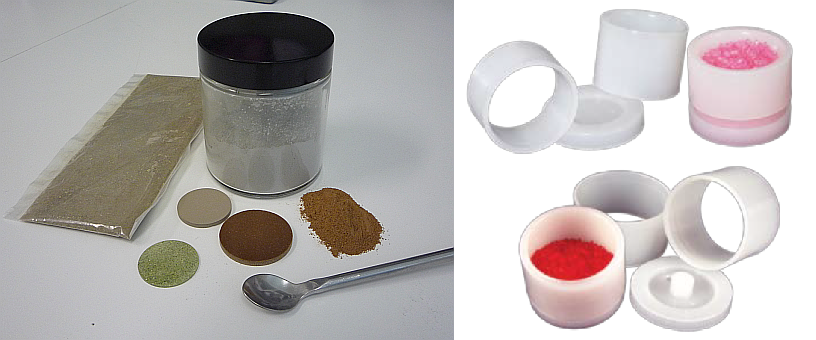6.2 Sample preparation
Although one of the advantageous features of XRF is the possibility of performing a completely non-destructive analysis, the latter is completely valid only for qualitative analysis. The assumptions made to derive the theoretical formulae require that the sample must comply with the same conditions.
Quantitative analysis requires that the collection of the sample or its preparation for the analysis would ensure at least homogeneous distribution of the elements and the density of the sample across its entire volume and; a flat surface with minimal roughness and free of fissures or cracks to be oriented to the excitation source and the detector.
Powders or granulate samples are usually pulverized by grinding (down to 80 microns grain size) to minimize scatter effects due to particle size. Additionally, grinding ensures that the sample is well homogenised. Loose powders can be analysed in special container, but pressing (hydraulically or manually) the sample into pellets compacts more the material, and ensures uniform density and better reproducibility of the measurements. Sometimes dilution of the sample is made by using binders or by preparing fused beads.

Liquid samples can be analysed in special container, but should be fresh to avoid changes in composition and analysed with short analysis time to minimize evaporation. Samples should not stratify during analysis, neither contain precipitants/solids, since the measurement could show settling trends with time. Pre-concentration procedures are useful to improve the detection limits, whereas the collection in solid residues avoids all the negative effects mentioned before.
Solid samples can be directly measured, for as long as the surface is oriented in the same manner as the calibration measurements to minimise differences in geometry factors. Polishing the surfaces will also minimize differences in scatter due to roughness, and flat samples are optimal for quantitative results.